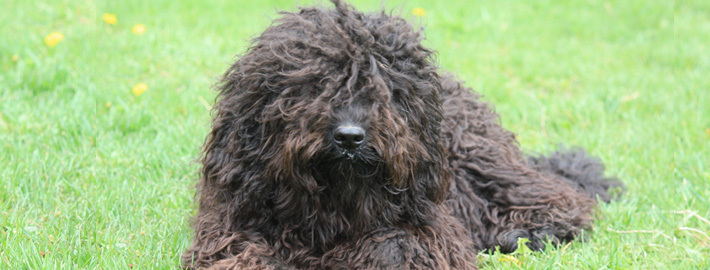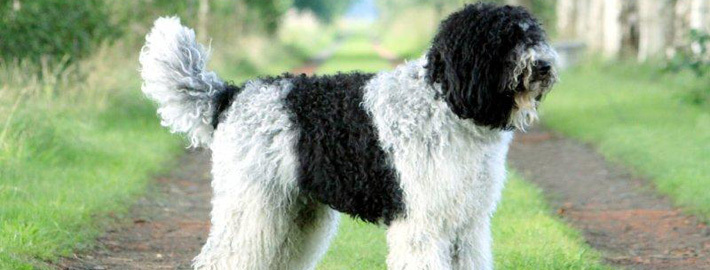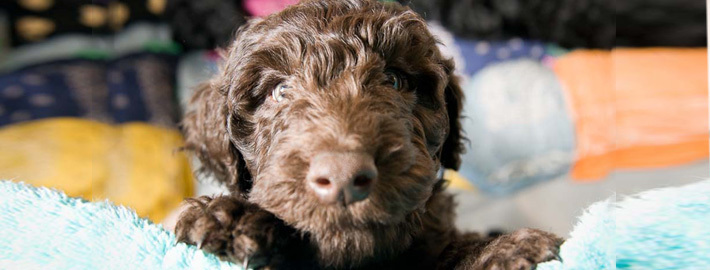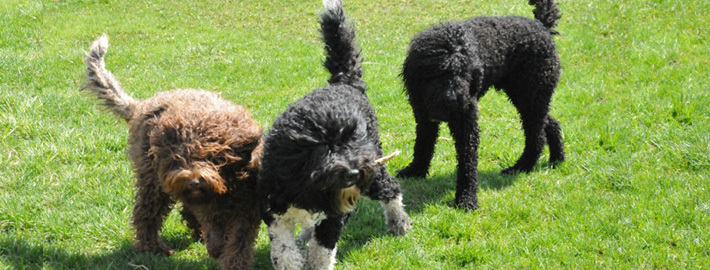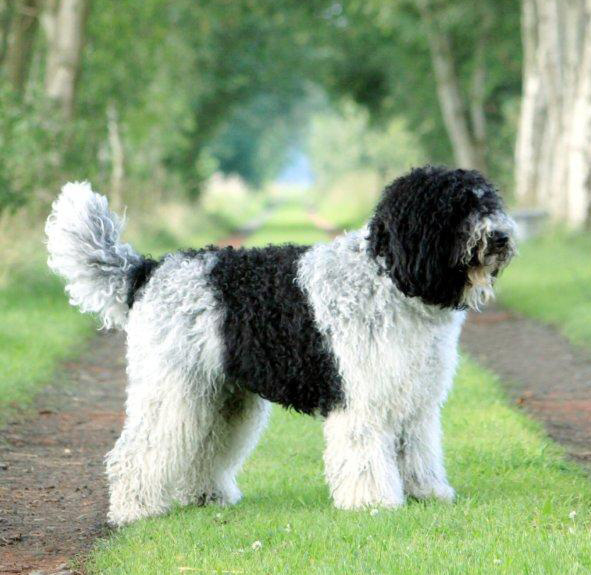What makes the Barbet Unique?
The Barbet is a rare breed. Most Barbet, especially those shown in conformation shows, are entirely black, black and white, or brown. It is common to see white chest spots and white paws or legs on black or brown coated dogs. Parti, Creme, and Pied variations are being born but in very limited numbers. The Barbet is a breed of dog; it is a medium-sized French water dog.
Breed Groups
Page Contents
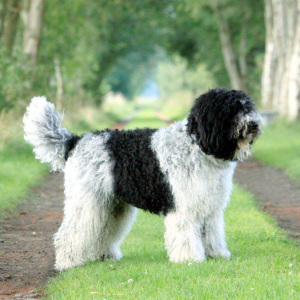
SnapShot
| Size: | Males – 57 to 66 cm (22 to 26 inches) Females – 52 to 62 cm (20 to 24 inches) |
| Weight: | Males – 17– to 28 kg (37.5 to 61.7 pounds) Females – 17– to 28 kg (37.5 to 61.7 pounds) |
| Origin: | France |
| Life Span: | 13 – 15 Years |
| Colour: | Grey, Fawn, Brown, Black, White |
| Litter Size: | 6 to 9 puppies, 8 is being common |
Is the Barbet Right For You?
Around the home, the Barbet enjoys the company of its family. It is probably best suited to living in a home with a large, fenced yard, but it can handle living in close quarters as long as it gets plenty of vigorous, outdoor exercise. If you live near a lake or stream, consider getting a Barbet—it loves splashing around in the water.
In 5 Words
- Obedient
- Companionable
- Intelligent
- Joyful
- Graceful
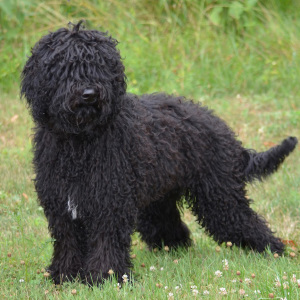
Characteristics
Learn About the Barbet
General Description
The barbet is a mid size dog with a long, woolly and curly coat. Their coats grow long and must be groomed regularly. The barbet does not shed, its coat grows continuously. Most barbet, are entirely black, black and white or chestnut brown. It is common to see white chest spots and white paws or legs on black or brown coated dogs. Grey, fawn and white are extremely rare.The breed stands 58 to 65 cms (20.5-25.5 inches) for the males in height, 53 to 61 for the females with a tolerance of 1 cm (FCI 2006, CKC 2009).
Short History of the Barbet
The Barbet breed is an integral part of dog history, and many familiar breeds have Barbet in their ancestry. Depending on geography and necessity, the Barbet connected through the centuries in various capacities, and as a companion dog, but more as an all-around working dog. The name Barbet became throughout centuries a “generic” name for a dog with a long, curly, woolly coat.
The `Grand Barbet` depicted in Count George Louis Buffon’s book `Histoire Naturelle’ (1750) is thought to be the original source of the various water dog breeds (Poodle, Portuguese Water Dog, American Water Spaniel, and so on). Its actual origin is lost in antiquity but probably stems from corded herding stock.
The Barbet is a French water dog and the breed’s name “Barbet” comes from the French word barbe, which means beard. The Barbet has also worked as sailor’s assistants, much like the Portuguese Water Dog. It was best known for being a waterfowl retriever in the marshes, wetlands and estuaries of France which is where the expression “muddy as a barbet” came from in the 19th century. Between the late 18th to early 19th century the same dog was known as the barbet in France, the barbone in Italy, and the pudel in Germany; for almost a hundred years the barbet and poodle were considered one and the same. With the advent of dog shows and selective breeding based purely on aesthetics the poodle was developed to be more elegant and of a solid colour to distinguish it from its more common past. The versatile nature of the Barbet has meant its survival, and many of today’s Barbet still have the assets attributed to them from the past and the Barbet origins and bloodlines can be traced back to the writing of the first standard in 1891.
Temperament
The barbet’s personality is described as companionable, joyful, obedient and intelligent. They are quick to learn and excell in conformation, obedience and agility. They are great with children, families, and the elderly. They enjoy being with their human companion. They need exercise daily to keep the dog in a healthy state of mind and body.
Caring for Your Barbet
General Health
Due to the extremely low number of Barbets in the world, little is known about long term health issues. Some issues that have exhibited themselves are ear infections, hip dysplasia, hernias, undescended testicles, undershot/overshot bites, and epilepsy. However, a study has just begun in France about health issues in the Barbet as several breeds have recently “contributed” to the Barbet. Most breeders today hipscore the parents before any matings and A, B, and C hipscores can be used.
The most common of these issues are ear infections, a problem in most water dog varieties. Ear problems can be minimized by proper ear care. A veterinarian should be consulted if the dog shows signs of an ear infection.The ear should always be clear of any hair, and inspected very regularly.
Grooming & Bathing
Daily brushing and combing is a must to prevent mats from forming. The coat readily picks up burrs, twigs, and leaves, so you may want to have those daily grooming sessions after walks. Some owners clip the coat short to make it easier to maintain. The breed sheds little, and may be a good choice for those with allergies.
Exercise & Training
They are quick to learn and need lifelong obedience training. With a quick wit and intelligence, the Barbet can learn commands quickly and perform at a high level. If you’re interested in agility competitions, you might look for a Barbet.

